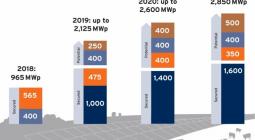Feds Seek to Gut Law Boosting Small-Scale Renewables.

Since 1978, the federal Public Utilities Regulatory Act has boosted renewable energy by requiring big utilities to buy some power from small solar and wind companies. PURPA reduces the nation’s dependence on fossil fuels and promotes competition in the electricity market – but now federal regulators are proposing changes that would hurt both the smaller companies and consumers.
Under current law, the prices the utilities must pay to PURPA-qualified small companies are set by state regulators and locked into place through long-term contracts. Those prices are much cheaper than the rates usually charged to residential customers, and PURPA requires utilities to pass those costs on to ratepayers. Small renewables companies are assured of a market for the power they produce, and consumers save money. In part, the law was designed to avoid utility boondoggles like building new expensive power plants if cheaper renewables are available.
Last month, the Federal Regulatory Commission, or FERC, proposed a rule that would let the utilities base what they pay small producers on wholesale market prices at the time of purchase, rather the predetermined contract price set by state regulators. Solar power advocates say that will make it harder – if not impossible – for small-scale producers to secure funding for their projects, because they and their investors won’t be able to make long-term plans based on knowing how much utilities would pay.
It’s a complicated law and a complicated proposal. But the bottom line, said Richard Glick, the one FERC commissioner who opposes the proposal, would be to “effectively gut” the law, swaying it to benefit big utilities rather than small producers and ratepayers.
In his dissent to the proposal, Glick also argued that a law passed by Congress more than 40 years ago should not be changed by a commission of political appointees. All three current FERC commissioners, including Glick, were appointed by President Trump.
The other two commissioners bought the arguments of the Edison Electric institute and other lobby groups for the utility industry: PURPA is no longer needed because wind and solar power are growing rapidly and there is robust competition in the electric sector.
That may be true in some parts of the country. But the federal Energy Information Administration found last year that PURPA-qualified solar facilities made up less than 1 percent of the renewable capacity added nationwide. The EIA said that in all but three states, the amount of renewable capacity added through utility purchases from small-scale producers was negligible.
The Edison Electrical Institute says PURPA is adding “unnecessary energy costs” to ratepayer bills. But that’s exactly what the utilities are doing by making huge investments in new natural gas plants rather than increasing the use of renewables from PURPA-qualified facilities.
Wind and solar are cheaper than new gas plants on their own. Solar combined with energy storage can outcompete small natural gas plants and, according to a recent study by Carnegie Tepper School of Business, mid-sized natural gas plants in many regions of the country. Utilities are also trying to keep afloat aging, money-losing nuclear and coal plants, often through taxpayer-financed subsidies.
The utility effort to deep-six PURPA is hardly surprising. Utilities are stepping up their attacks on state policies that encourage customer-owned solar and energy efficiency investments. Total control of the electric market and protecting their power plant investments from competition is their ultimate goal. FERC should provide a check on those schemes, not facilitate them.
1 October 2019
EWG Home




